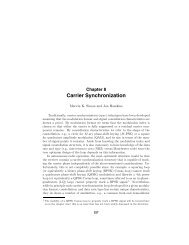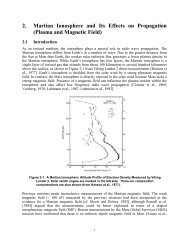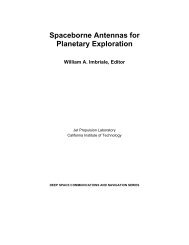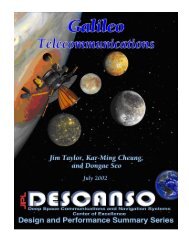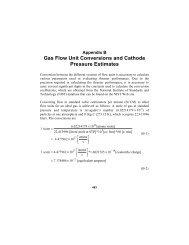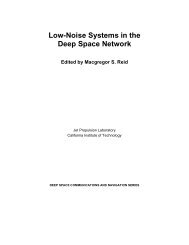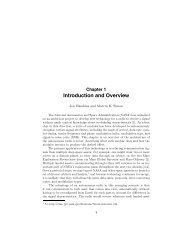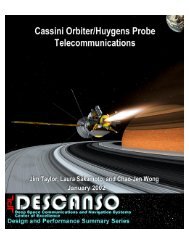Propagation Effects Handbook for Satellite Systems - DESCANSO ...
Propagation Effects Handbook for Satellite Systems - DESCANSO ...
Propagation Effects Handbook for Satellite Systems - DESCANSO ...
You also want an ePaper? Increase the reach of your titles
YUMPU automatically turns print PDFs into web optimized ePapers that Google loves.
.-<br />
I<br />
where Lf is the fog extent~ in km.<br />
The standard error of the estimation procedure described above<br />
is 0.14 db. The author recommends in a later publication that the<br />
procedure should not be used <strong>for</strong> frequencies below 30 GHz, since the<br />
error is comparable in magnitude to the fog attenuation itself<br />
(Altshuler-1986) .<br />
As an example of an application of the procedure, consider a<br />
link at 44 GHz, with a fog visibility of 120 m (0.12 km). The fog<br />
density is then<br />
M = (0.024/0o12)10sa = 0.0839<br />
The normalized fog attenuation, at a temperatur”e of 25°C, will<br />
be, from Eq. (6.4-4);<br />
af = 0.996 dB/km/g/ms<br />
The total fog attenuation, assuming a fog extent of 2 km, will then<br />
be, from Eq. (6.4-6)<br />
Af (dB) = (0.996)(0.0839)(2) = 0.167 dB<br />
The fog attenuation, as expected, is very low, and is not usually a<br />
factor in satellite link system design <strong>for</strong> frequencies below 100<br />
GHz .<br />
6.4.4<br />
Sand and Dust Attenuation<br />
Sand and dust scatter electromagnetic energy and their effect<br />
may be evaluated via Mie scattering. To date simulated measurements<br />
have been carried out in the laboratory (Ahmed and Auchterlouis-<br />
1976) . At 10 GHz and concentrations of sand and dust less than 10-5<br />
g/m3 the measured specific attenuation was less than 0.1 dB/km <strong>for</strong><br />
sand and 0.4 d8/km <strong>for</strong> clay. Severe storms have concentrations<br />
exceeding these values.<br />
6-73





